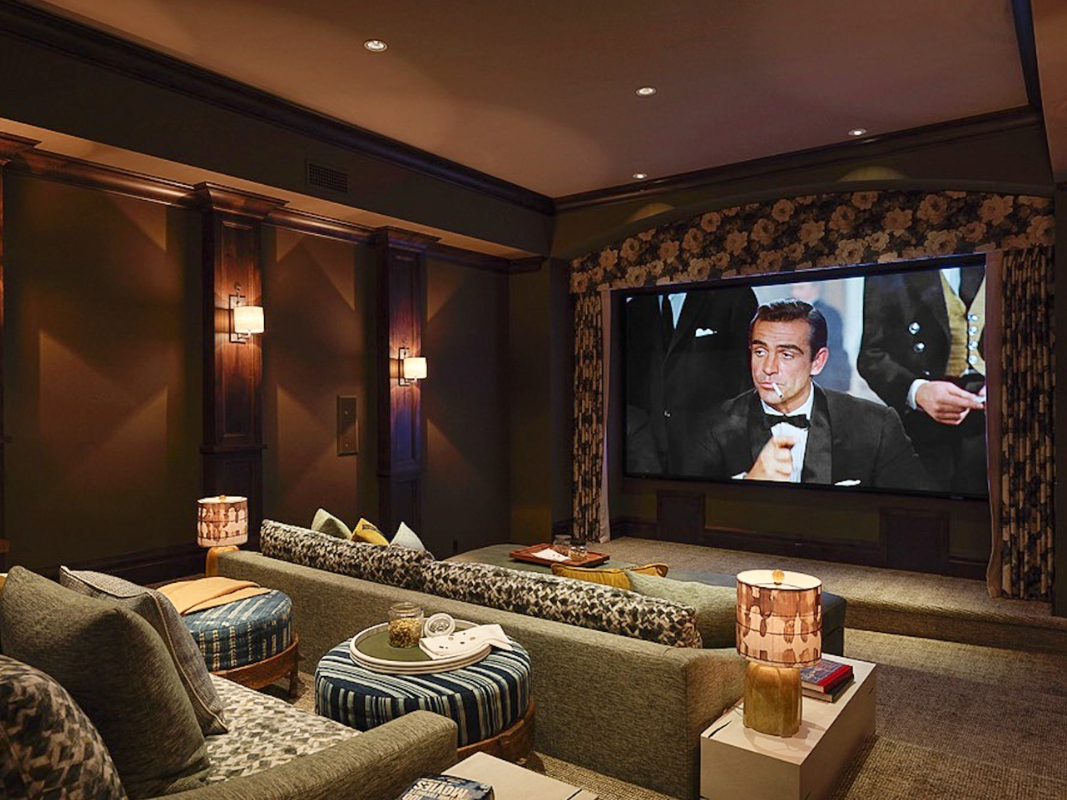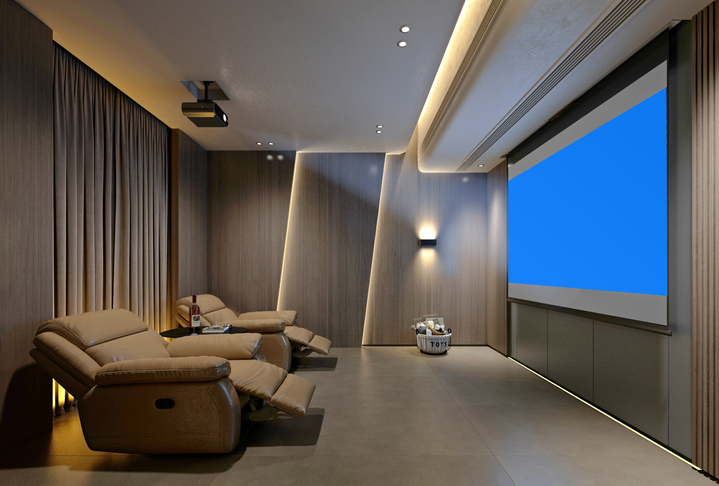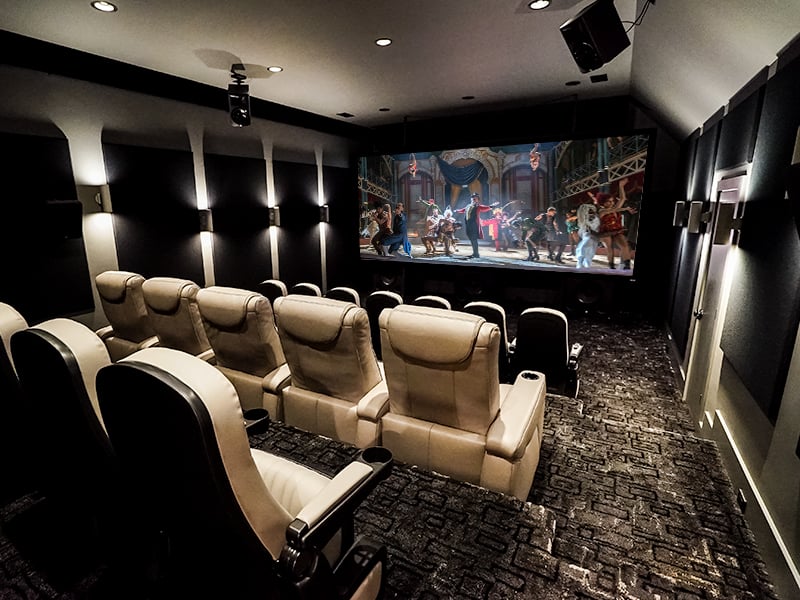Best Reasons to Choose Home Theater Tampa for Your Future Project
Best Reasons to Choose Home Theater Tampa for Your Future Project
Blog Article
Home Theater 101: Every Little Thing You Need to Know for a Motion Picture Experience in your home
Developing a home movie theater that equals the motion picture experience of an industrial theater entails mindful factor to consider of multiple components, including screen option, sound systems, and area format. Whether you are pondering the optimal display dimension or the ins and outs of surround noise, recognizing these principles is necessary.
Picking the Right Screen
When setting up a home movie theater, selecting the appropriate screen can make or break the viewing experience - home theater tampa. The display works as the centerpiece of your setup, influencing picture top quality, watching angles, and general aesthetic. Trick factors to consider consist of screen resolution, size, and kind
Initially, figure out the suitable display size based on your area measurements and seating range. A general standard is to sit about 1.5 to 2.5 times the angled screen size for optimum viewing. Next off, choose in between various display kinds, such as fixed-frame, mechanized, or retractable displays, each offering distinctive benefits. Fixed-frame screens generally give the ideal photo quality, while motorized choices permit versatility precede use.
Resolution is another important variable. For a genuinely immersive experience, consider a screen created for 4K or perhaps 8K content, making sure intensity and clarity. Additionally, take into consideration the screen's gain, which impacts illumination and comparison; a higher gain can improve illumination in well-lit areas, while a lower gain might be preferable for darker settings.
Selecting Audio Equipment
Audio devices is an essential part of any home movie theater system, dramatically enhancing the general watching experience. The option of audio equipment can establish the depth, clarity, and immersion of noise, vital for creating a motion picture atmosphere.
When picking audio devices, think about a surround stereo, which usually consists of a receiver, numerous audio speakers, and a speaker. A 5.1 or 7.1 channel system is recommended, where the first number represents the audio speakers and the second the speaker, providing an immersive soundscape. The receiver is the heart of the system, managing sound and video clip signals, and must support contemporary formats like Dolby Atmos for a boosted spatial experience.
Quality audio speakers are essential; seek versions that use a well balanced sound profile with good bass response. Floor-standing audio speakers can create richer noise, while bookshelf options save room. In addition, take into consideration cordless options for ease of setup, although wired systems commonly provide exceptional performance.

Ideal Seating Plans
Producing a suitable home cinema experience pivots significantly on optimum seating setups. The plan of seats plays an essential function in both comfort and watching top quality, directly affecting the general cinematic experience.
First, think about the display size and viewing distance. An usual standard is to place seats at a range roughly 1.5 to 2.5 times the diagonal size of the display. This ensures an immersive experience without straining the eyes.
Following, altitude is vital. The back rows ought to be higher than the front to prevent obstructions if your seats is in a browse around here tiered style. For flat seating, ensure that the front row is not also near to the screen, and that every person has a clear line of view.
Furthermore, think about the plan in regards to social dynamics. Team seating can enhance the communal experience, while specific seats may be chosen for individual watching.

Finally, prioritize comfort with ergonomic seats that supports extensive viewing periods. Including recliners or supported seats can considerably boost the experience, making the home cinema a recommended location for both enjoyment and leisure.
Lighting and Setting
Effective illumination and ambiance are crucial elements of a properly designed home theater, as they significantly affect the seeing experience. The appropriate lighting can improve the cinematic feeling, while inadequate choices can detract from it. For ideal outcomes, think about a split lighting strategy that includes ambient, task, and accent lighting.
Ambient lighting gives basic illumination, guaranteeing that the area is not completely dark, which can stress the eyes. Dimmer buttons are highly recommended, permitting modifications based upon the content being viewed. Task lights, such as wall sconces or floor lights, offers useful lighting for activities like reading or navigating the room without interrupting the overall environment.
Accent lighting can be made use of to highlight building functions or create prime focus, including depth and rate of interest to the space. LED strip lights behind screens or along racks can supply a subtle glow that boosts the visual experience without frustrating the visitor.

Wiring and Installation Tips
A tactical electrical wiring setup is important for accomplishing ideal performance in your home theater system. Proper wiring not only makes certain high-grade audio and video clip signals however also enhances the general aesthetic of your area. Begin by mapping out your format, determining where each part will certainly be placed, including your display, audio speakers, and receiver.
When picking cables, focus on premium, suitably gauged electrical wiring to reduce signal loss. HDMI wires ought to be used for video links, while audio speaker cable should match the specifications of your speakers and amplifier. Choose in-wall rated cable televisions to follow safety and security requirements and maintain a tidy appearance.

Conclusion
In summary, creating a phenomenal home movie theater experience requires careful consideration of numerous elements, including screen choice, audio devices, seating setups, lights, and circuitry. Each component plays a vital duty in attaining optimal performance and atmosphere, ultimately enhancing the pleasure of home entertainment. By prioritizing these variables, a motion picture environment can be my explanation successfully reproduced, enabling for immersive checking out experiences that measure up to typical cinema settings. Attention to detail in each area is necessary for general contentment.
Developing a home movie theater that rivals the motion picture experience of an industrial theater entails cautious consideration of several components, including display choice, sound systems, and area format.When setting up a home theater, selecting the appropriate screen can make or damage the seeing experience. Next, select between numerous screen kinds, such as fixed-frame, motorized, or retractable screens, each offering distinctive benefits. For a really immersive experience, take into consideration a screen created for 4K or also 8K content, guaranteeing intensity and quality.In summary, creating an extraordinary home cinema experience requires mindful factor to consider of different components, consisting of display choice, audio tools, seating arrangements, illumination, and electrical wiring.
Report this page